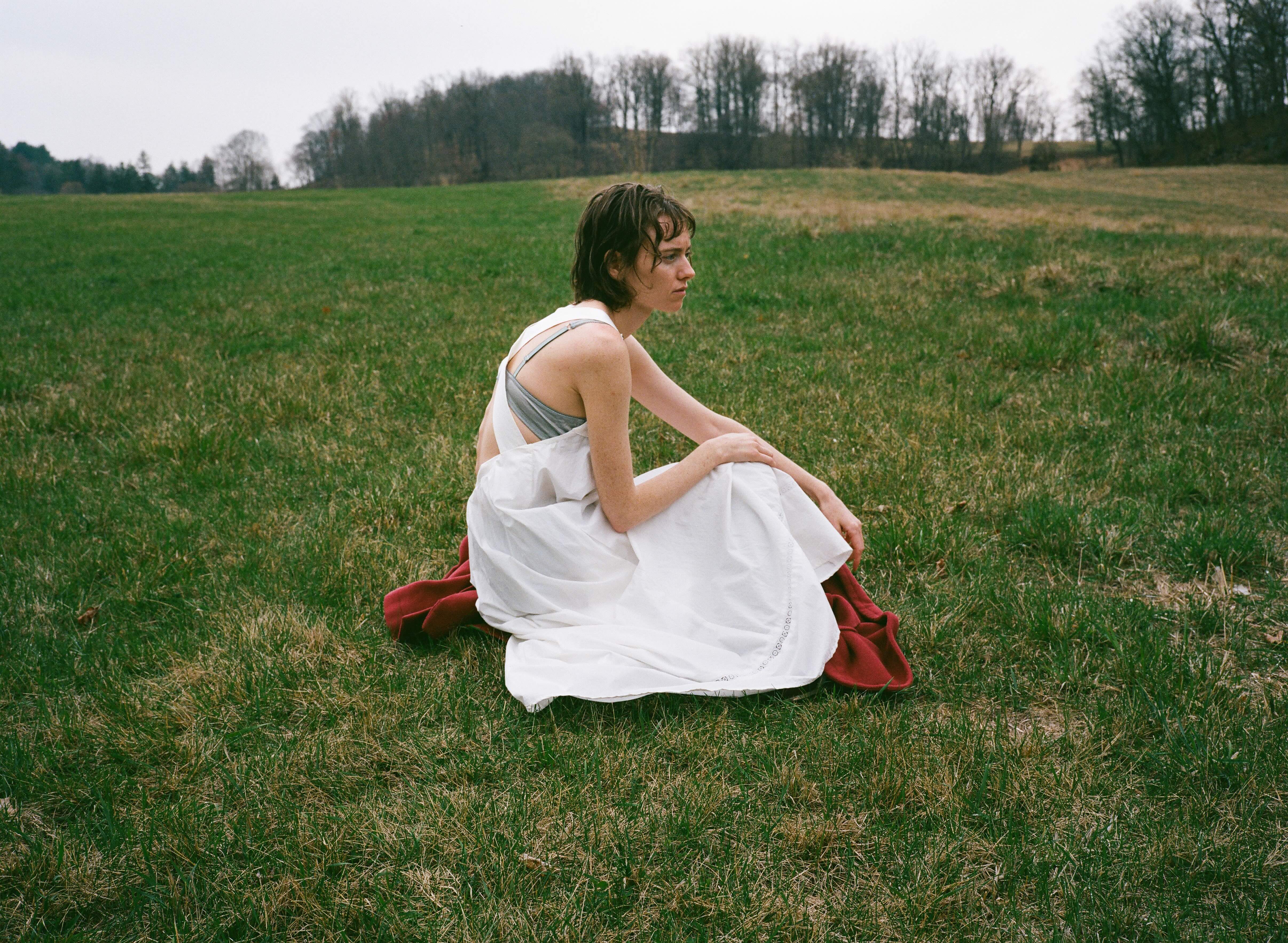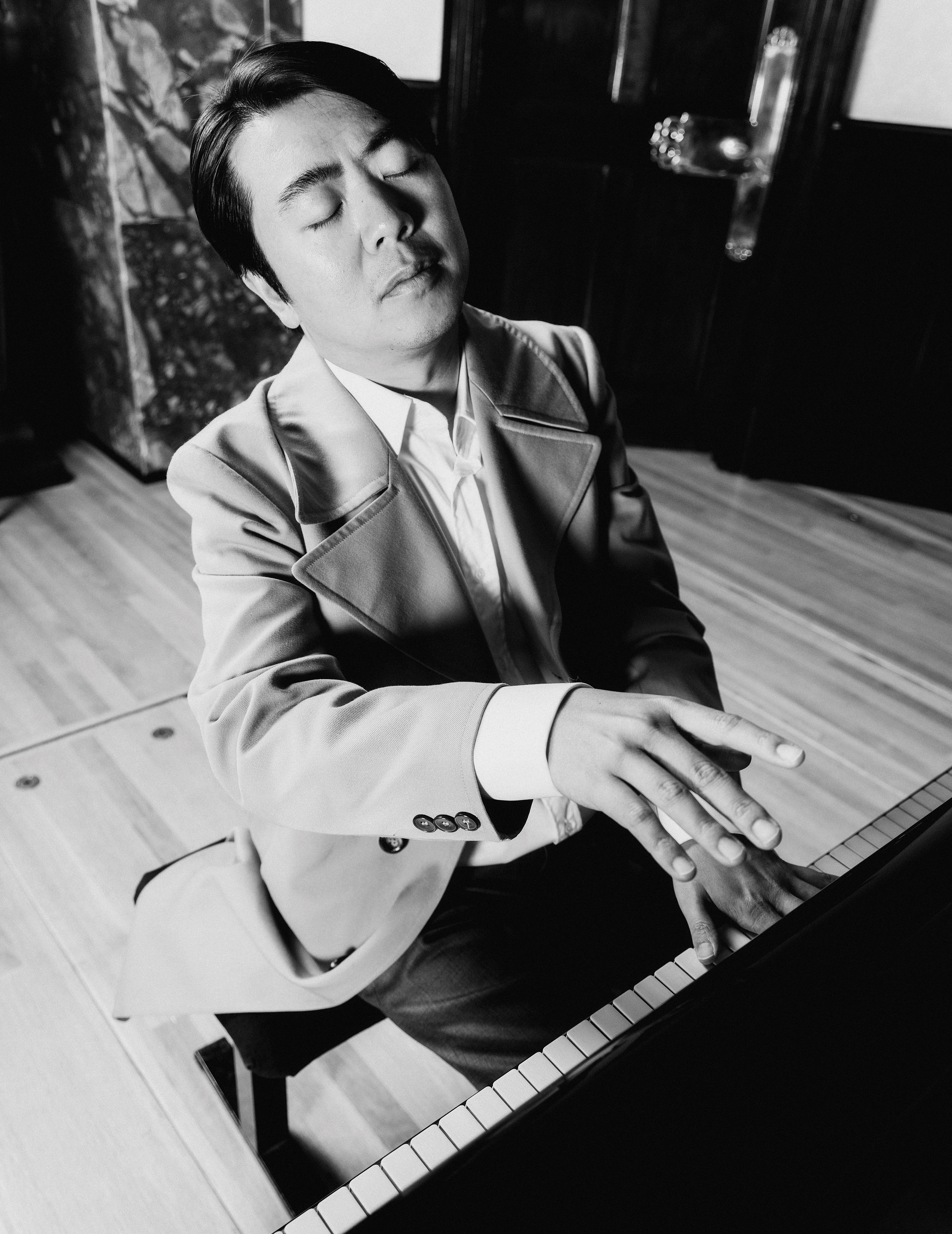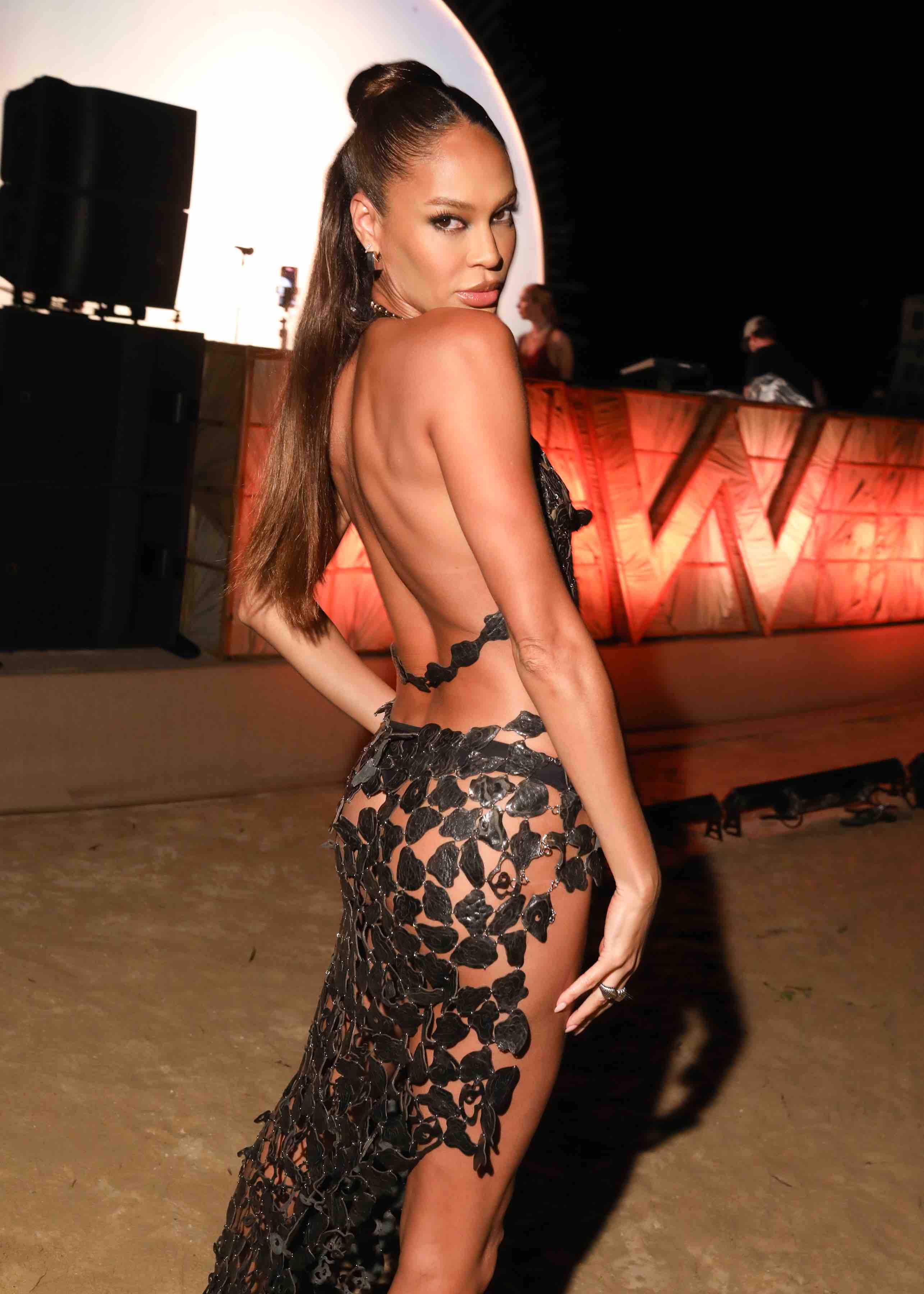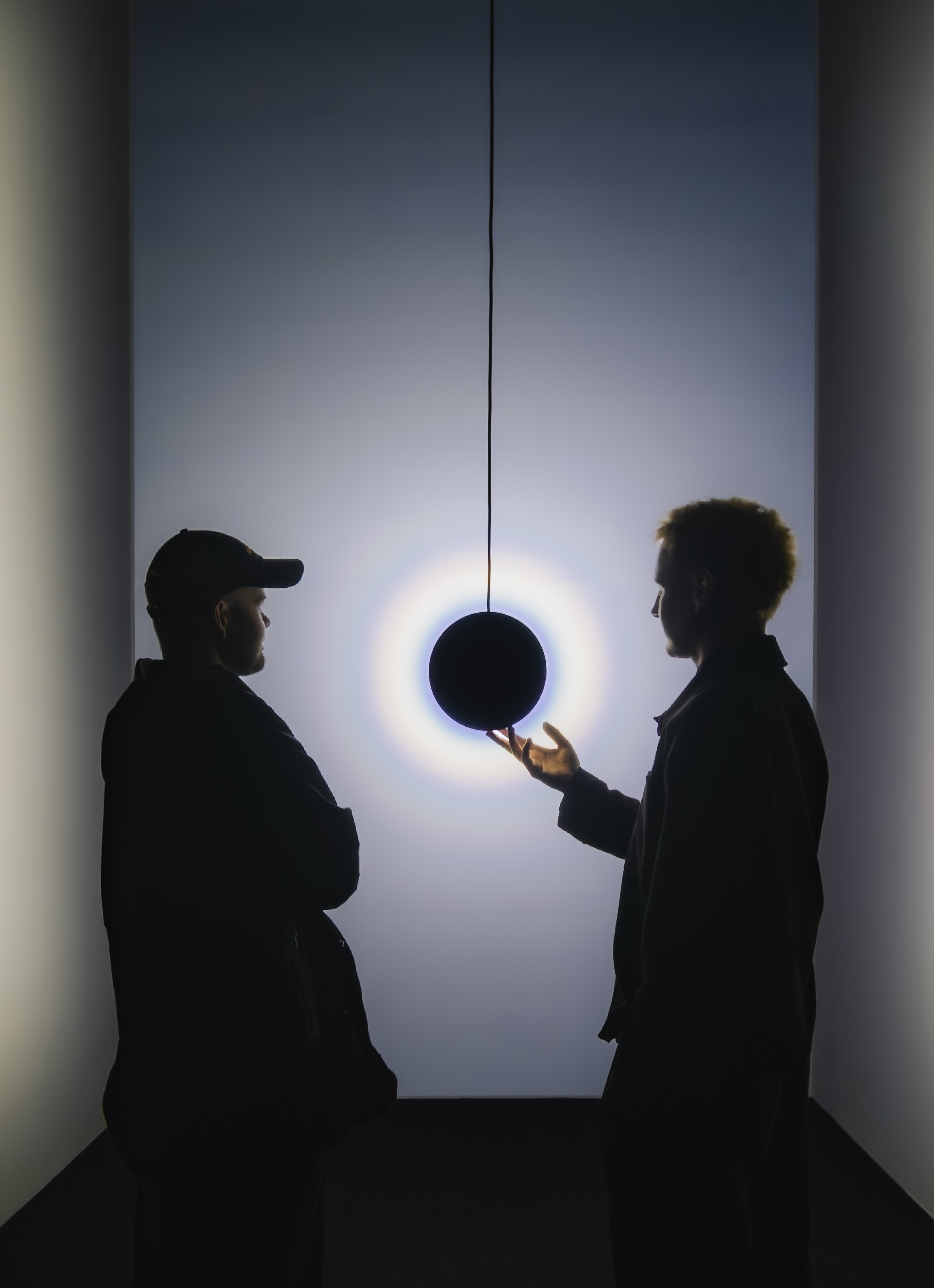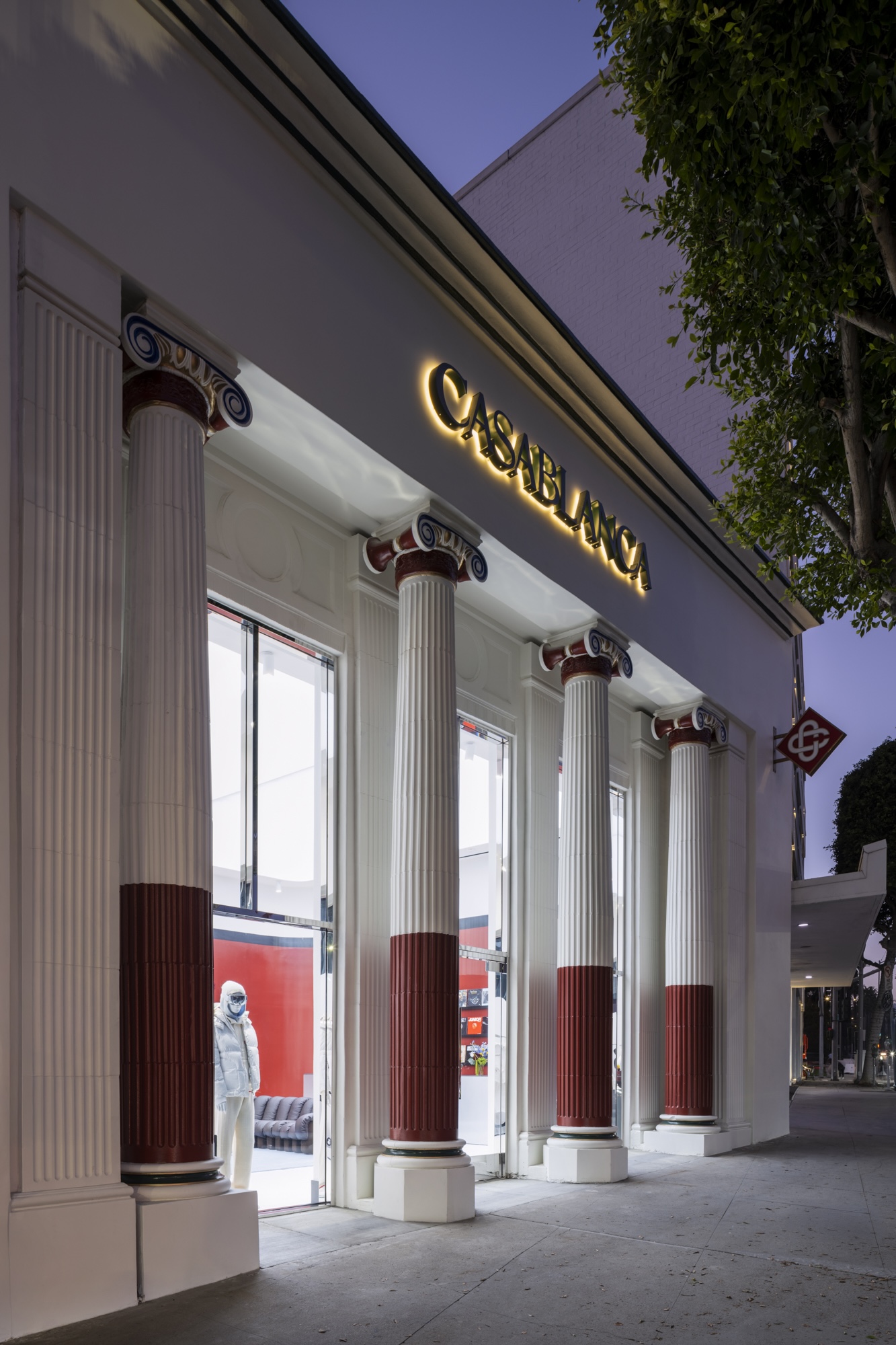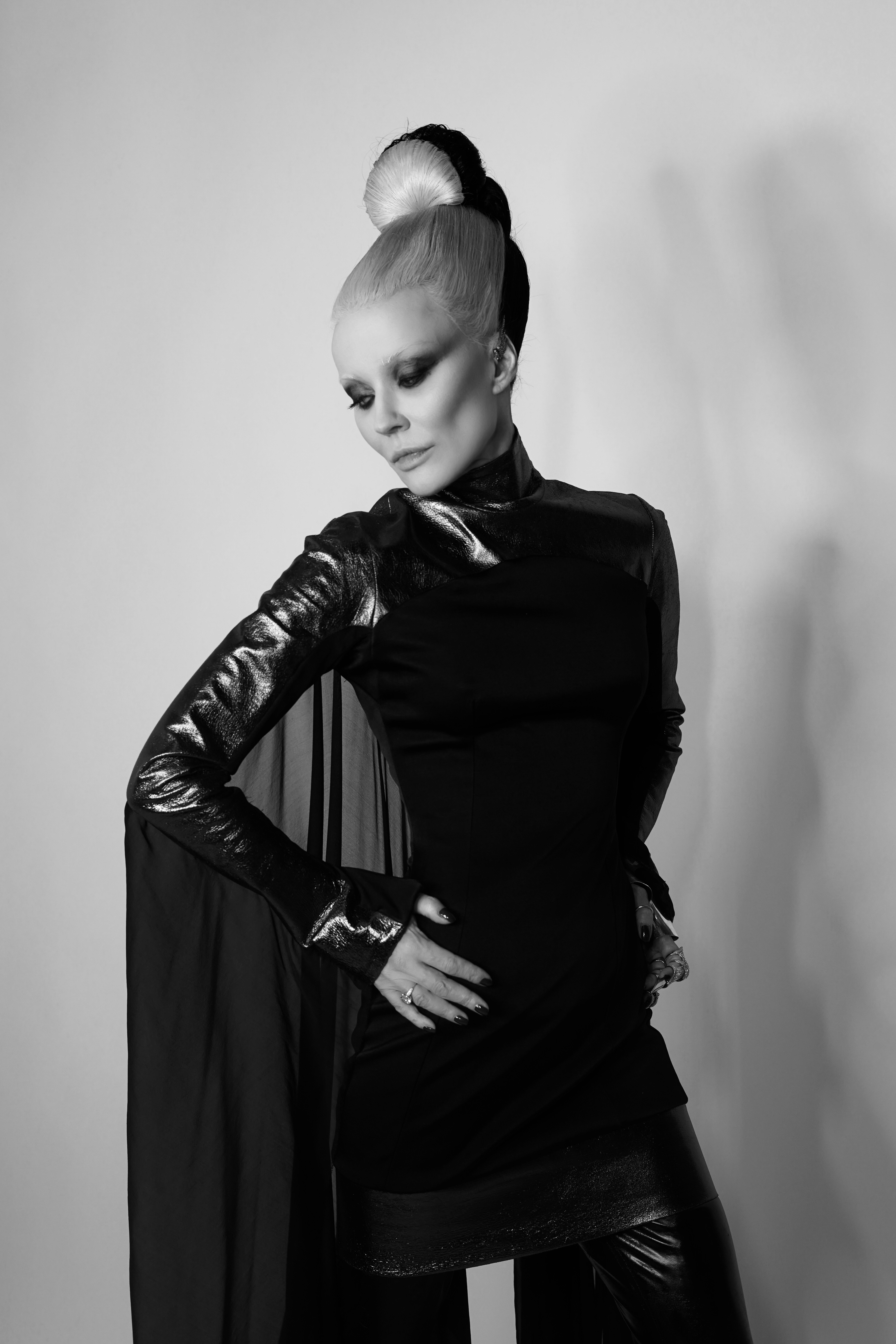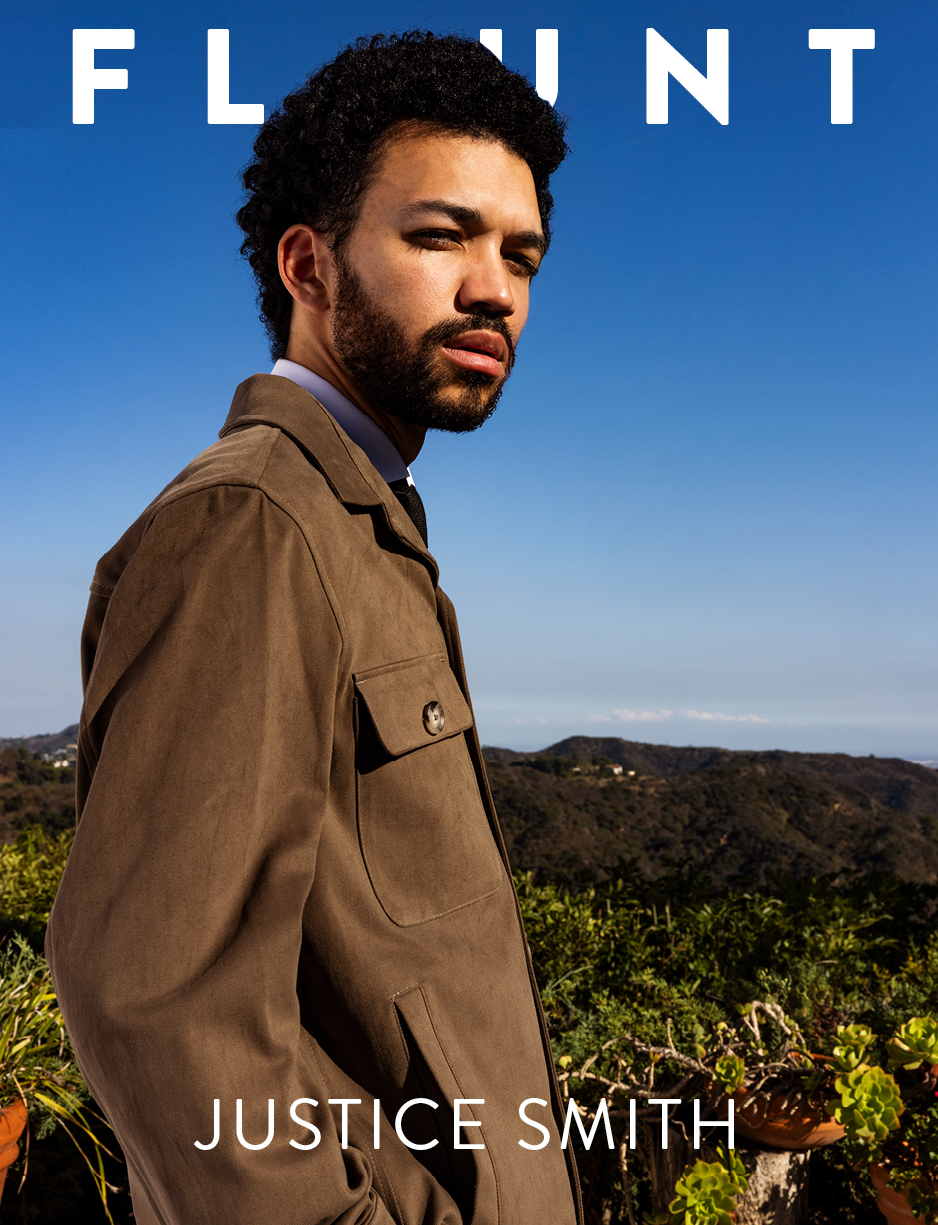

_Charleston, WV:_
The line at the coffee shop snaked all the way to the door, but no one seemed in too much of a rush. Behind the counter
a handful of neon-haired, pierced, tattooed baristas shuffled around; a handwritten chalkboard sign with the varieties of espresso, coffee, and tea hung above them as the espresso machine steamed and the smell of fresh baked pastries wafted from the kitchen in back. The coffee shop could have been in any liberal area, though it reminded me most of my regular neighborhood spot in Berkeley. About halfway through my wait, a young black man in a slim-fitting gray flannel suit with a white pocket square tugged on my bag, a rectangular, hunter green backpack made of thick felt.
“Cool lookin’ backpack,” he said, smiling from behind his horn rimmed glasses. “You get it around here?”
“Nope,” I answered, “internet!”
“Figures,” he chuckled. He turned to the barista behind the counter, a smiling porcelain-faced woman with two nose rings in one nostril and a bat tattoo on her forearm.
“Hey there, what can I get ya?” the barista asked, while her coworker continued to make my iced latte.
“What’s good for lunch today? Any good stuff on the vegan menu?” the man asked, casually leaning up against the glass case full of baked goods.
“Well, today we have our hummus wrap made with our house-made rosemary hummus, which is _super_ yummy, and of course you can take the protein out of any of our salads—I like the orzo salad with lime dressing. But I have a feeling you’re going to go for the—”
“Hummus wrap! You got me,” the man smiled back.
I shuffled to the front of the line, paid for my iced latte
on the newest version of the SquareStand register, and took a seat on a wicker chair by the front door. The street outside was relatively crowded: businessmen shuffled in their shirtsleeves past Taylor Books across the street; groups of people ate on the patio in front of the sushi place Ichiban; occasionally a leggings- clad jogger wearing AirPods bounced by. Directly outside of the coffee shop was a large freestanding metal clock, the kind you see on Main Street at Disneyland.
Down the street, past the Oddbird Gift Emporium and The Copper Pint tavern, on the bank of the murky Kanawha River, stood a slim brick tower. Completed in 1911, the 14-story structure had “Union Building” stenciled in gilded letters on a glass semicircular window above the front doors. The building served the needs of the 20,000 currently active members, 50,000 dependents, and 40,000 pensions of the United Mine Workers of America. Though the numbers aren’t what they used to be, coal mining still employs a huge number of people in the area, so it makes perfect sense for their headquarters to be located in the heart of West Virginia’s state capital.
A few blocks away is the beautiful St. John’s Episcopal Church, a late gothic revival style building built in 1884. From the side of one of Charleston’s oldest buildings flew a large LGBTQ pride flag. The church is the meeting place for the Charleston Pride organization, the sole group in town that handles the relatively standard issues facing Charleston’s queer community: homelessness, substance and domestic abuse, and access to healthcare. For the past eight years, the organization had also put together the Charleston Pride Festival, which started in 2010 as a single-day event involving a parade and a drag show, and has since expanded to a weeklong celebration, with different events all over town.
“We figure out how to make it work kinda piecemeal,”
Bill told me while sitting at the bar of Broadway, Charleston’s longest operating gay bar. “We work with certain hospitals and certain shelters, the ones we know we can, and try to make sure everyone has a place to sleep, some food to eat, and hopefully gets to see a doctor if they need to.” Bill was an older, rotund man, sitting alone at the bar when I walked in. When he saw me scanning the bar for a place to sit he beckoned me over to what, based on the way his newspaper spread out in front of him, seemed to be his regular corner. He asked where I was from and offered me a drink. It’s an interaction that in other circumstances likely would have made me uncomfortable,
but the gesture was one of genuine hospitality. That brand
of kindness, rather than the “oh, _bless_ your _heart_” phoniness
of some places I’d been in the South, was a quality I hadn’t expected to find in West Virginia.
Broadway was one of two thriving gay bars in Charleston. The crowd, often a mix of LGBTQ and straight people, mostly comes to see the drag shows put on twice weekly by the resident drag queen in charge, Alexis Karmichael. Alexis and her drag daughter Jazmine emcee with Lucy and Ethel-type banter, though unlike the Ricardos and the Mertzes, theirs is generally focused on the unwholesome standbys of drag show hosting: giving the audience the finger, dick jokes, slut jokes, race jokes, and ugly jokes. While the crowd and the other drag performers are almost all white, both Alexis and Jazmine are people of color—Alexis is black, and Jazmine is Latinx.
“That means I can say whatever the fuck I want,” Jazmine said, in a voice reminiscent of both Dolly Parton and Joan Rivers. “Let ‘em get mad, they can leave!” she scoffed as she took a dramatic drag from her cigarette. “I’ve been doing this shit almost 20 years, sweetie, if I wasn’t funny people woulda stopped coming a long time ago. These oversensitive idiots can eat shit.” Jazmine’s outfit that night, an expertly coiffured blond wig, large rhinestone earrings that dangled past her shoulders, and a regal sequined gown, made the crassness of her proclamations all the more hilarious.
Her irreverence was a common trait among drag queens I’d met, but Jazmine’s was born from a different place. Hers is the kind I suspect can only develop for a well-known, minority drag queen in the capital city of a state where every single county voted heavily for Trump. I’d heard queer people in big cities complain that, though the huge popularity of _RuPaul’s Drag Race_ had over- saturated media with drag, the show’s influence on society-at-large had not yet reached up into the Appalachians.
“We’ve had plenty of shit done to the bar,”
Jazmine told
me. “Dumbasses
with their trucks
driving by,
throwing shit at
us, calling us names. Last time that happened I ran after those motherfuckers screamin’, threw my beer bottle and everything. Never saw them again.”
For all of Jazmine’s stories of warding off “those inbreds from the country,” as she delicately put it, I did not encounter any homophobia. As Alexis told me, while we sat on the back patio of the bar enjoying vodka sodas, “People here are way more racist than homophobic. Everyone loves those _Will & Grace_ re-runs, but let me ask you this: How many black people you see on that show?” It was not the first time that racism being paramount to all other forms of bigotry was brought up along the trip, though unlike in Mobile, Alabama, where the Confederate flags flying everywhere gave me a good idea of what to expect, I hadn’t seen anything like that in Charleston. In fact, I hadn’t seen as much as a Confederate flag bumper sticker on my entire drive throughout the state. The same goes for Trump bumper stickers, lawn signs, or flags.
“Drive thirty minutes off the road—that’ll change real quick,” Alexis smiled. “But people here in Charleston like
to think we’re _cosmopolitan_,” she tossed her wig over her shoulder and smiled a beauty pageant smile. “We’re _different_
in Charleston—_evolved._” Alexis winked at me and headed back inside to emcee the remainder of the drag show, which had started to run long. “This is what happens when I let Jazmine introduce people,” she sighed before downing the rest of her cocktail and walking, carefully, up the steps in her heels towards the stage inside.
Every Friday during the summer months the city holds an event called “Friday Nights on the Levee.” They flush out the otherwise brown Kanawha River for the occasion, and the immaculately clean public amphitheater that sits, river-side, in the shadow of the Union Building, fills
up with people from all over the county. Some locals watch the festivities from their boats on the river, but most mill about the long rows of food trucks and local vendors of Appalachian glass art and handmade jewelry. On the night I attended, the main act was a three-piece funk group who had been flown in from Philadelphia. Up until then I had mostly seen white people, but the crowd here was far more diverse. I recognized a guy I had seen the night before at Broadway, and waved hello.
“Oh my god, hi!” he said.
“Isn’t this as
fun as I said?” He was a white, blond guy in his early twenties, wearing a loudly printed faux-silk shirt unbuttoned to just above his navel. I told him it was great, and that I was surprised to see such a diverse group of people. “Stop being so damn shocked about how nice it is here!” he told me with a smile. “Just because everyone here complains about the town doesn’t mean it’s so bad—would I be here if it was?” Our conversation was interrupted about every two minutes as people he knew from high school, work,
or church stopped to catch up. He introduced me to all of
them as a “Californian here to do _research.”_ Without exception, they wished me luck, and told me to come back soon. “We
could use more young people like you here!” a woman who
had been his teacher told me. I lamented the apparent lack of job opportunities and she brushed it off. “Join this guy at the Outback and you’ll make enough to rent a whole damn house.” I did the math, and she was right.
* * *
_Illustrations by_ [**Matt Rota**](https://www.instagram.com/matt.rota/?hl=en)
 
_Charleston, WV:_
The line at the coffee shop snaked all the way to the door, but no one seemed in too much of a rush. Behind the counter
a handful of neon-haired, pierced, tattooed baristas shuffled around; a handwritten chalkboard sign with the varieties of espresso, coffee, and tea hung above them as the espresso machine steamed and the smell of fresh baked pastries wafted from the kitchen in back. The coffee shop could have been in any liberal area, though it reminded me most of my regular neighborhood spot in Berkeley. About halfway through my wait, a young black man in a slim-fitting gray flannel suit with a white pocket square tugged on my bag, a rectangular, hunter green backpack made of thick felt.
“Cool lookin’ backpack,” he said, smiling from behind his horn rimmed glasses. “You get it around here?”
“Nope,” I answered, “internet!”
“Figures,” he chuckled. He turned to the barista behind the counter, a smiling porcelain-faced woman with two nose rings in one nostril and a bat tattoo on her forearm.
“Hey there, what can I get ya?” the barista asked, while her coworker continued to make my iced latte.
“What’s good for lunch today? Any good stuff on the vegan menu?” the man asked, casually leaning up against the glass case full of baked goods.
“Well, today we have our hummus wrap made with our house-made rosemary hummus, which is _super_ yummy, and of course you can take the protein out of any of our salads—I like the orzo salad with lime dressing. But I have a feeling you’re going to go for the—”
“Hummus wrap! You got me,” the man smiled back.
I shuffled to the front of the line, paid for my iced latte
on the newest version of the SquareStand register, and took a seat on a wicker chair by the front door. The street outside was relatively crowded: businessmen shuffled in their shirtsleeves past Taylor Books across the street; groups of people ate on the patio in front of the sushi place Ichiban; occasionally a leggings- clad jogger wearing AirPods bounced by. Directly outside of the coffee shop was a large freestanding metal clock, the kind you see on Main Street at Disneyland.
Down the street, past the Oddbird Gift Emporium and The Copper Pint tavern, on the bank of the murky Kanawha River, stood a slim brick tower. Completed in 1911, the 14-story structure had “Union Building” stenciled in gilded letters on a glass semicircular window above the front doors. The building served the needs of the 20,000 currently active members, 50,000 dependents, and 40,000 pensions of the United Mine Workers of America. Though the numbers aren’t what they used to be, coal mining still employs a huge number of people in the area, so it makes perfect sense for their headquarters to be located in the heart of West Virginia’s state capital.
A few blocks away is the beautiful St. John’s Episcopal Church, a late gothic revival style building built in 1884. From the side of one of Charleston’s oldest buildings flew a large LGBTQ pride flag. The church is the meeting place for the Charleston Pride organization, the sole group in town that handles the relatively standard issues facing Charleston’s queer community: homelessness, substance and domestic abuse, and access to healthcare. For the past eight years, the organization had also put together the Charleston Pride Festival, which started in 2010 as a single-day event involving a parade and a drag show, and has since expanded to a weeklong celebration, with different events all over town.
“We figure out how to make it work kinda piecemeal,”
Bill told me while sitting at the bar of Broadway, Charleston’s longest operating gay bar. “We work with certain hospitals and certain shelters, the ones we know we can, and try to make sure everyone has a place to sleep, some food to eat, and hopefully gets to see a doctor if they need to.” Bill was an older, rotund man, sitting alone at the bar when I walked in. When he saw me scanning the bar for a place to sit he beckoned me over to what, based on the way his newspaper spread out in front of him, seemed to be his regular corner. He asked where I was from and offered me a drink. It’s an interaction that in other circumstances likely would have made me uncomfortable,
but the gesture was one of genuine hospitality. That brand
of kindness, rather than the “oh, _bless_ your _heart_” phoniness
of some places I’d been in the South, was a quality I hadn’t expected to find in West Virginia.
Broadway was one of two thriving gay bars in Charleston. The crowd, often a mix of LGBTQ and straight people, mostly comes to see the drag shows put on twice weekly by the resident drag queen in charge, Alexis Karmichael. Alexis and her drag daughter Jazmine emcee with Lucy and Ethel-type banter, though unlike the Ricardos and the Mertzes, theirs is generally focused on the unwholesome standbys of drag show hosting: giving the audience the finger, dick jokes, slut jokes, race jokes, and ugly jokes. While the crowd and the other drag performers are almost all white, both Alexis and Jazmine are people of color—Alexis is black, and Jazmine is Latinx.
“That means I can say whatever the fuck I want,” Jazmine said, in a voice reminiscent of both Dolly Parton and Joan Rivers. “Let ‘em get mad, they can leave!” she scoffed as she took a dramatic drag from her cigarette. “I’ve been doing this shit almost 20 years, sweetie, if I wasn’t funny people woulda stopped coming a long time ago. These oversensitive idiots can eat shit.” Jazmine’s outfit that night, an expertly coiffured blond wig, large rhinestone earrings that dangled past her shoulders, and a regal sequined gown, made the crassness of her proclamations all the more hilarious.
Her irreverence was a common trait among drag queens I’d met, but Jazmine’s was born from a different place. Hers is the kind I suspect can only develop for a well-known, minority drag queen in the capital city of a state where every single county voted heavily for Trump. I’d heard queer people in big cities complain that, though the huge popularity of _RuPaul’s Drag Race_ had over- saturated media with drag, the show’s influence on society-at-large had not yet reached up into the Appalachians.
“We’ve had plenty of shit done to the bar,”
Jazmine told
me. “Dumbasses
with their trucks
driving by,
throwing shit at
us, calling us names. Last time that happened I ran after those motherfuckers screamin’, threw my beer bottle and everything. Never saw them again.”
For all of Jazmine’s stories of warding off “those inbreds from the country,” as she delicately put it, I did not encounter any homophobia. As Alexis told me, while we sat on the back patio of the bar enjoying vodka sodas, “People here are way more racist than homophobic. Everyone loves those _Will & Grace_ re-runs, but let me ask you this: How many black people you see on that show?” It was not the first time that racism being paramount to all other forms of bigotry was brought up along the trip, though unlike in Mobile, Alabama, where the Confederate flags flying everywhere gave me a good idea of what to expect, I hadn’t seen anything like that in Charleston. In fact, I hadn’t seen as much as a Confederate flag bumper sticker on my entire drive throughout the state. The same goes for Trump bumper stickers, lawn signs, or flags.
“Drive thirty minutes off the road—that’ll change real quick,” Alexis smiled. “But people here in Charleston like
to think we’re _cosmopolitan_,” she tossed her wig over her shoulder and smiled a beauty pageant smile. “We’re _different_
in Charleston—_evolved._” Alexis winked at me and headed back inside to emcee the remainder of the drag show, which had started to run long. “This is what happens when I let Jazmine introduce people,” she sighed before downing the rest of her cocktail and walking, carefully, up the steps in her heels towards the stage inside.
Every Friday during the summer months the city holds an event called “Friday Nights on the Levee.” They flush out the otherwise brown Kanawha River for the occasion, and the immaculately clean public amphitheater that sits, river-side, in the shadow of the Union Building, fills
up with people from all over the county. Some locals watch the festivities from their boats on the river, but most mill about the long rows of food trucks and local vendors of Appalachian glass art and handmade jewelry. On the night I attended, the main act was a three-piece funk group who had been flown in from Philadelphia. Up until then I had mostly seen white people, but the crowd here was far more diverse. I recognized a guy I had seen the night before at Broadway, and waved hello.
“Oh my god, hi!” he said.
“Isn’t this as
fun as I said?” He was a white, blond guy in his early twenties, wearing a loudly printed faux-silk shirt unbuttoned to just above his navel. I told him it was great, and that I was surprised to see such a diverse group of people. “Stop being so damn shocked about how nice it is here!” he told me with a smile. “Just because everyone here complains about the town doesn’t mean it’s so bad—would I be here if it was?” Our conversation was interrupted about every two minutes as people he knew from high school, work,
or church stopped to catch up. He introduced me to all of
them as a “Californian here to do _research.”_ Without exception, they wished me luck, and told me to come back soon. “We
could use more young people like you here!” a woman who
had been his teacher told me. I lamented the apparent lack of job opportunities and she brushed it off. “Join this guy at the Outback and you’ll make enough to rent a whole damn house.” I did the math, and she was right.
* * *
_Illustrations by_ [**Matt Rota**](https://www.instagram.com/matt.rota/?hl=en)

_Charleston, WV:_
The line at the coffee shop snaked all the way to the door, but no one seemed in too much of a rush. Behind the counter
a handful of neon-haired, pierced, tattooed baristas shuffled around; a handwritten chalkboard sign with the varieties of espresso, coffee, and tea hung above them as the espresso machine steamed and the smell of fresh baked pastries wafted from the kitchen in back. The coffee shop could have been in any liberal area, though it reminded me most of my regular neighborhood spot in Berkeley. About halfway through my wait, a young black man in a slim-fitting gray flannel suit with a white pocket square tugged on my bag, a rectangular, hunter green backpack made of thick felt.
“Cool lookin’ backpack,” he said, smiling from behind his horn rimmed glasses. “You get it around here?”
“Nope,” I answered, “internet!”
“Figures,” he chuckled. He turned to the barista behind the counter, a smiling porcelain-faced woman with two nose rings in one nostril and a bat tattoo on her forearm.
“Hey there, what can I get ya?” the barista asked, while her coworker continued to make my iced latte.
“What’s good for lunch today? Any good stuff on the vegan menu?” the man asked, casually leaning up against the glass case full of baked goods.
“Well, today we have our hummus wrap made with our house-made rosemary hummus, which is _super_ yummy, and of course you can take the protein out of any of our salads—I like the orzo salad with lime dressing. But I have a feeling you’re going to go for the—”
“Hummus wrap! You got me,” the man smiled back.
I shuffled to the front of the line, paid for my iced latte
on the newest version of the SquareStand register, and took a seat on a wicker chair by the front door. The street outside was relatively crowded: businessmen shuffled in their shirtsleeves past Taylor Books across the street; groups of people ate on the patio in front of the sushi place Ichiban; occasionally a leggings- clad jogger wearing AirPods bounced by. Directly outside of the coffee shop was a large freestanding metal clock, the kind you see on Main Street at Disneyland.
Down the street, past the Oddbird Gift Emporium and The Copper Pint tavern, on the bank of the murky Kanawha River, stood a slim brick tower. Completed in 1911, the 14-story structure had “Union Building” stenciled in gilded letters on a glass semicircular window above the front doors. The building served the needs of the 20,000 currently active members, 50,000 dependents, and 40,000 pensions of the United Mine Workers of America. Though the numbers aren’t what they used to be, coal mining still employs a huge number of people in the area, so it makes perfect sense for their headquarters to be located in the heart of West Virginia’s state capital.
A few blocks away is the beautiful St. John’s Episcopal Church, a late gothic revival style building built in 1884. From the side of one of Charleston’s oldest buildings flew a large LGBTQ pride flag. The church is the meeting place for the Charleston Pride organization, the sole group in town that handles the relatively standard issues facing Charleston’s queer community: homelessness, substance and domestic abuse, and access to healthcare. For the past eight years, the organization had also put together the Charleston Pride Festival, which started in 2010 as a single-day event involving a parade and a drag show, and has since expanded to a weeklong celebration, with different events all over town.
“We figure out how to make it work kinda piecemeal,”
Bill told me while sitting at the bar of Broadway, Charleston’s longest operating gay bar. “We work with certain hospitals and certain shelters, the ones we know we can, and try to make sure everyone has a place to sleep, some food to eat, and hopefully gets to see a doctor if they need to.” Bill was an older, rotund man, sitting alone at the bar when I walked in. When he saw me scanning the bar for a place to sit he beckoned me over to what, based on the way his newspaper spread out in front of him, seemed to be his regular corner. He asked where I was from and offered me a drink. It’s an interaction that in other circumstances likely would have made me uncomfortable,
but the gesture was one of genuine hospitality. That brand
of kindness, rather than the “oh, _bless_ your _heart_” phoniness
of some places I’d been in the South, was a quality I hadn’t expected to find in West Virginia.
Broadway was one of two thriving gay bars in Charleston. The crowd, often a mix of LGBTQ and straight people, mostly comes to see the drag shows put on twice weekly by the resident drag queen in charge, Alexis Karmichael. Alexis and her drag daughter Jazmine emcee with Lucy and Ethel-type banter, though unlike the Ricardos and the Mertzes, theirs is generally focused on the unwholesome standbys of drag show hosting: giving the audience the finger, dick jokes, slut jokes, race jokes, and ugly jokes. While the crowd and the other drag performers are almost all white, both Alexis and Jazmine are people of color—Alexis is black, and Jazmine is Latinx.
“That means I can say whatever the fuck I want,” Jazmine said, in a voice reminiscent of both Dolly Parton and Joan Rivers. “Let ‘em get mad, they can leave!” she scoffed as she took a dramatic drag from her cigarette. “I’ve been doing this shit almost 20 years, sweetie, if I wasn’t funny people woulda stopped coming a long time ago. These oversensitive idiots can eat shit.” Jazmine’s outfit that night, an expertly coiffured blond wig, large rhinestone earrings that dangled past her shoulders, and a regal sequined gown, made the crassness of her proclamations all the more hilarious.
Her irreverence was a common trait among drag queens I’d met, but Jazmine’s was born from a different place. Hers is the kind I suspect can only develop for a well-known, minority drag queen in the capital city of a state where every single county voted heavily for Trump. I’d heard queer people in big cities complain that, though the huge popularity of _RuPaul’s Drag Race_ had over- saturated media with drag, the show’s influence on society-at-large had not yet reached up into the Appalachians.
“We’ve had plenty of shit done to the bar,”
Jazmine told
me. “Dumbasses
with their trucks
driving by,
throwing shit at
us, calling us names. Last time that happened I ran after those motherfuckers screamin’, threw my beer bottle and everything. Never saw them again.”
For all of Jazmine’s stories of warding off “those inbreds from the country,” as she delicately put it, I did not encounter any homophobia. As Alexis told me, while we sat on the back patio of the bar enjoying vodka sodas, “People here are way more racist than homophobic. Everyone loves those _Will & Grace_ re-runs, but let me ask you this: How many black people you see on that show?” It was not the first time that racism being paramount to all other forms of bigotry was brought up along the trip, though unlike in Mobile, Alabama, where the Confederate flags flying everywhere gave me a good idea of what to expect, I hadn’t seen anything like that in Charleston. In fact, I hadn’t seen as much as a Confederate flag bumper sticker on my entire drive throughout the state. The same goes for Trump bumper stickers, lawn signs, or flags.
“Drive thirty minutes off the road—that’ll change real quick,” Alexis smiled. “But people here in Charleston like
to think we’re _cosmopolitan_,” she tossed her wig over her shoulder and smiled a beauty pageant smile. “We’re _different_
in Charleston—_evolved._” Alexis winked at me and headed back inside to emcee the remainder of the drag show, which had started to run long. “This is what happens when I let Jazmine introduce people,” she sighed before downing the rest of her cocktail and walking, carefully, up the steps in her heels towards the stage inside.
Every Friday during the summer months the city holds an event called “Friday Nights on the Levee.” They flush out the otherwise brown Kanawha River for the occasion, and the immaculately clean public amphitheater that sits, river-side, in the shadow of the Union Building, fills
up with people from all over the county. Some locals watch the festivities from their boats on the river, but most mill about the long rows of food trucks and local vendors of Appalachian glass art and handmade jewelry. On the night I attended, the main act was a three-piece funk group who had been flown in from Philadelphia. Up until then I had mostly seen white people, but the crowd here was far more diverse. I recognized a guy I had seen the night before at Broadway, and waved hello.
“Oh my god, hi!” he said.
“Isn’t this as
fun as I said?” He was a white, blond guy in his early twenties, wearing a loudly printed faux-silk shirt unbuttoned to just above his navel. I told him it was great, and that I was surprised to see such a diverse group of people. “Stop being so damn shocked about how nice it is here!” he told me with a smile. “Just because everyone here complains about the town doesn’t mean it’s so bad—would I be here if it was?” Our conversation was interrupted about every two minutes as people he knew from high school, work,
or church stopped to catch up. He introduced me to all of
them as a “Californian here to do _research.”_ Without exception, they wished me luck, and told me to come back soon. “We
could use more young people like you here!” a woman who
had been his teacher told me. I lamented the apparent lack of job opportunities and she brushed it off. “Join this guy at the Outback and you’ll make enough to rent a whole damn house.” I did the math, and she was right.
* * *
_Illustrations by_ [**Matt Rota**](https://www.instagram.com/matt.rota/?hl=en)
